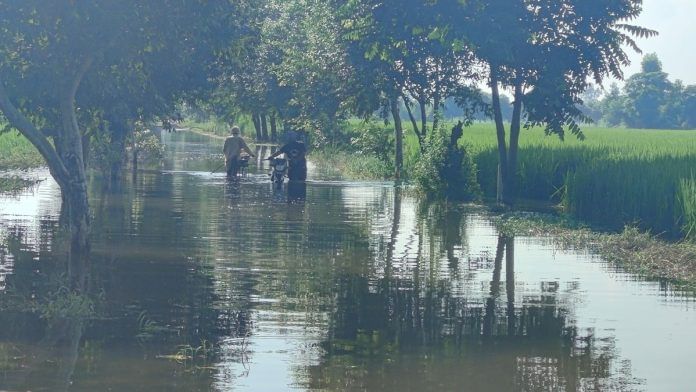Jalandhar/Tarn Taran/Amritsar: After weeks, the Beas River is finally back to its gurgling self after a violent carnage. But authorities and residents are yet to learn their lesson.
This historically tame and disciplined Indian river has suddenly started wreaking havoc, much like a rebellion—a mutiny against everyone who has done her wrong.
This monsoon wasn’t the first time that Himachal Pradesh and Punjab had to bear witness to the destruction caused by the Beas. Everything that came in its way was razed. But these repeated warnings have not deterred local people from testing their fates. This time too, as soon as the floodwaters receded, rebuilding started—hotels, highways, and multi-storey houses—now, even closer to the riverbed.
“We are testing our luck with the Himalayan rivers,” said Navin Juyal, geologist and former scientist at Ahmedabad’s Physical Research Laboratory (PRL), who specialises in Himalayan rivers.
Punjab is facing one of its worst floods since 1988. Rivers, including Beas, Satluj, Raavi, and Ghaggar, swelled up with water, destroying homes, filling up agricultural farms, and displacing people and livestock. Punjab government estimates indicate that nearly 1,900 villages have been inundated, and more than 3.5 lakh people have been affected by these floods.
Upstream, in Himachal Pradesh, the damage was worse. At least 300 people lost their lives.
“Rain doesn’t cause disasters. Ideally, a healthy river’s catchment should be able to hold, store and recharge it. But the catchment health of the Beas is poor,” said Himanshu Thakkar, expert on Indian rivers

Beas, a 470-km-long river—the only Indus river that originates and ends within Indian borders—is one of the culprits for this carnage.
The river, a relatively small one that eventually goes on to meet the Satluj, could potentially become a model for other Indian rivers, but poor catchment management, encroachment inching closer to the river bed, and widespread and indiscriminate tree cutting on the fragile mountains are testing its limits. According to experts, Beas has been causing increased damage over the last few years.
And the impacts of climate change are making things worse.
Himanshu Thakkar, an expert on Indian rivers from the South Asia Network on Dams, Rivers and People (SANDRP), said that while most parts of north and northwest India recorded heavy, unprecedented rain this year, the floods were symptomatic of a larger problem.
“Rain doesn’t cause disasters. Ideally, a healthy river’s catchment should be able to hold, store and recharge it. But the catchment health of the Beas is poor. Its streams are destroyed, there is widespread erosion and muck is mindlessly dumped into it,” Thakkar said.
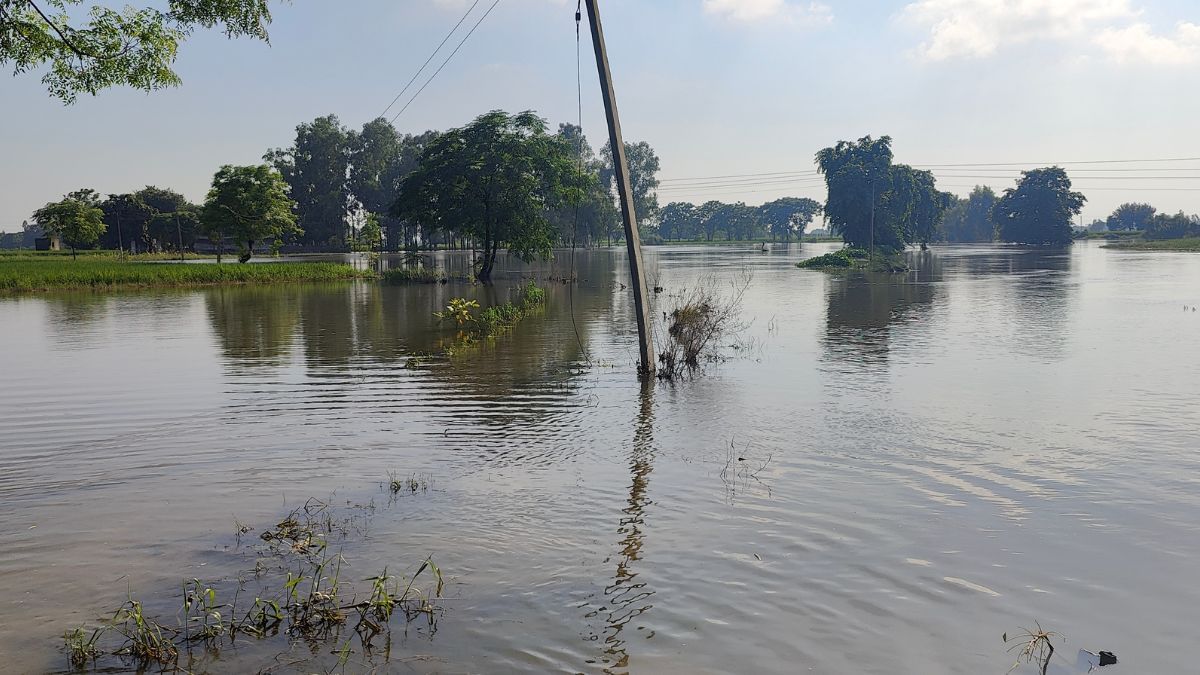
The angry river
Two of Beas’ tributaries have significantly shrunk in size because of encroachments.
On Kullu’s main road, the damaged remains of buildings stand weakly along the edge of the Beas. Until a few weeks ago, these hotels and lodges were bustling with tourists and guides. Today, owners, accompanied by rescuers, are doing the rounds to assess the extent of flood damage.
“There were some fresh rounds of rain last week, which impacted the relief operations. We are now back to assisting the local people to get back on their feet,” said Kartar Singh, a social activist from Kullu.
Residents and environmental activists said that encroachment on the banks of the Beas is not only a local menace but also worsens the impacts of the seasonal floods.
In Palampur, for instance, many new low-budget hotels have allegedly come up without the municipal corporation’s permission. In fact, two of Beas’ tributaries, Biral and Mol Khud, which pass through the area, have significantly shrunk in size because of these encroachments.
According to state government estimates, during non-monsoon months, the rampant construction around Biral has reduced its size to only about 10-12 metres in certain pockets.
“You look at the size of the river during non-monsoonal months and think that you have solid ground to build your buildings on. But the river reclaims its land. There is no point crying over such a loss,” Singh said.
The impact of the Beas floods has not remained limited to Himachal Pradesh. It can be seen in Punjab, too.
Geographically, Punjab is blessed with three perennial rivers—Beas, Sutlej, and Raavi. Ghaggar is a seasonal river that cuts across the state.
These rivers have been the pride of the state, which is known for its fertile lands, often finding mention in classical literature, including stories like Heer Ranjha.
Beas goes further back in history. Though there are several versions of how the river got its name, the most widely accepted story credits it to the sage Ved Vyasa, who is known to have written the Indian epic Mahabharata.
The English name ‘Beas’, which was originally ‘Vipasha’ in Sanskrit, was linked to Vyasa.
According to another version of Beas’ origin story, it got its name from sage Vashishta—Vyas’ great-grandfather—who tried to kill himself by jumping in the river. He was, however, saved when the river changed its course, releasing the sage unharmed.
Vashishta named the river ‘Vipasha’, which literally translates to the freer of bondage’, to mark the beginning of his new life.
But all this lore has not helped with Beas’ upkeep and protection.
This is not the first time that Punjab has been hit by ravaging floods. In 1955, 1988, 1993, 2019, and 2023, too, floodwaters had knocked on people’s doors.
This year, in July and August, record-breaking rain in Himachal Pradesh led to the Beas flowing in all its glory. Government data shows that the carrying capacity of the river was breached, with an inflow of about 55,000 cusecs of water.
Intense rainfall in Punjab only made things worse.
According to IMD data, Punjab this season recorded 24 per cent excess rainfall till 30 August. The state received 443mm of rainfall, as against the seasonal average of 357.1mm.
This trend of above-average rain was observed across the country. Between 28 August and 3 September, India, as a whole, recorded 48 per cent more rainfall than the seasonal average. The heavy rainfall in Himachal Pradesh—seemingly caused by a cloudburst—also led to the worsening of floods in the three rivers flowing through Punjab.
Districts including Kapurthala, Tarn Taran, Jalandhar, Ferozepur, and Hoshiarpur—on the banks of the Beas—were the worst impacted.
A senior official from the India Meteorological Department (IMD) said that till the first week of September, Punjab, Himachal Pradesh and Jammu and Kashmir had recorded rainfall 45 per cent above the season’s normal.
“Toward the end of the season, rains suddenly picked up again in most Himalayan states,” the official said.
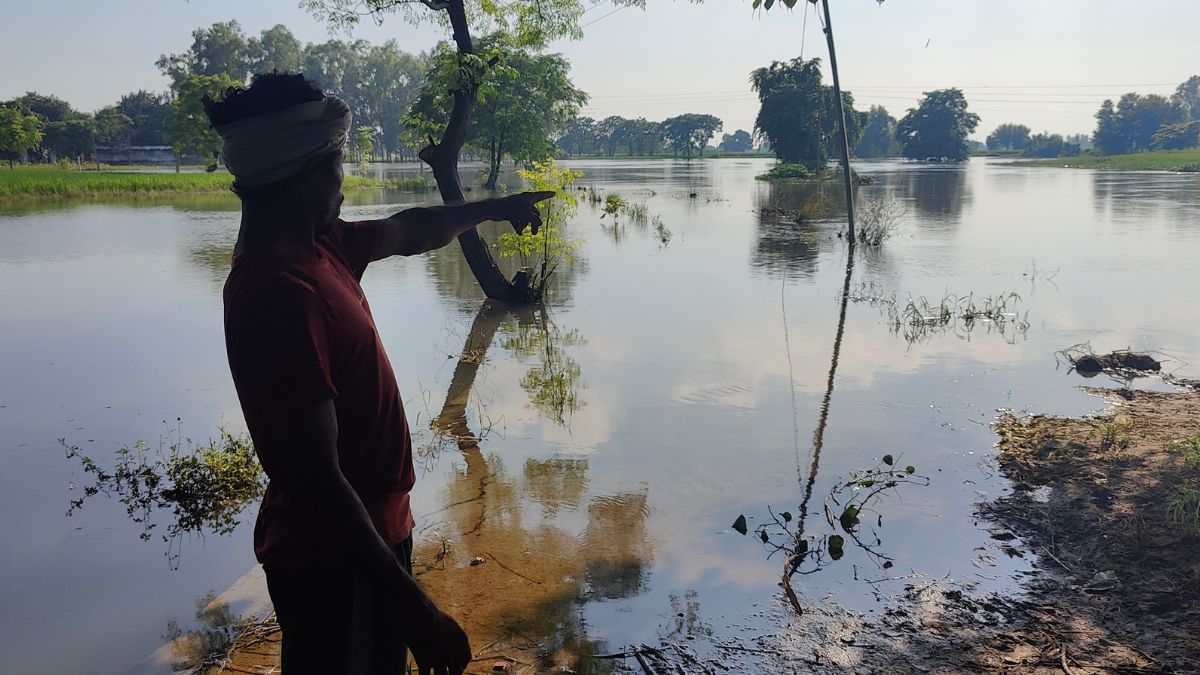

Improper dam management
Punjab alleged that the untimely release of water from upstream dams caused the deadly floods.
The road leading to Kapurthala’s Sultanpur Lodhi—located on the banks of the Beas—is now lined up with makeshift shanties. The residents move around uncomfortably, making mental notes of the flood damage. The movement of relief workers breaks these recurrent thoughts.
As soon as trucks carrying essential supplies would park around these camps, these residents would race toward them. If you’re lucky enough to be among the first few to line up, you will have a chance to feed your family. For the rest, the wait for the next round of supplies continues till the next morning.
“It pains me to see the fields inundated with so much water. It is not just our homes; we have lost this season’s paddy yield too. That will be a major financial blow for many of us,” said Harjeet Singh, a farmer from Sultanpur Lodhi. His family of four has been living in the relief camp for nearly a week.

The Punjab government has pointed to the improper management of dams on the upstream of the Beas and Sutlej as the cause of these floods. Officials and experts claim that the Central Water Commission, a central agency responsible for reservoir operations and river flows in India, released large volumes of water from the dams on the upstream of the Beas River. It worsened the flood situation downstream.
They allege that water from Pong, Bhakra, and Ranjit Sagar was released simultaneously, without warning.
The Pong dam on the Beas, located in Himachal Pradesh’s Kangra, and the Bhakra dam on the Satluj in Bilaspur, are both operated by an interstate agency called the Bhakra Beas Management Board (BBMB). It was constituted in 1966, under the Punjab Reorganisation Act, to manage the flow of the rivers.
The agency makes a call on when and how much water to release from a dam’s reservoirs to ensure water levels don’t exceed the dam’s crest. This decision is based on ‘rule curves’, which are essentially seasonal guidelines that outline the timing and volume of water releases.
Punjab alleged that the untimely release of water from upstream dams caused the deadly floods. A senior official said that in July, the water in the Pong dam reservoir was stored without release and was later discharged all at once when the rains intensified.
“There were forecasts that warned that the rain this season would be above normal. Then what was the need to hold so much water?” the official said. He added that there was no warning before the release of such a high quantity of water, which led to Punjab not getting enough time to evacuate its villages.
The BBMB has vehemently denied these allegations.
“We have to release water from the dam when the water crosses a certain mark. If we don’t do that, the safety of the dam and the people around it would be at risk,” Manoj Kumar Tripathi, chairperson of the BBMB, told ThePrint.
Tripathi stressed that if BBMB had not released water from the dams, Punjab would have faced floods much earlier.
In a press conference last week, BBMB said that this monsoon season, the inflow of water in the Pong dam was about 20 per cent higher than in 2023, when Punjab flooded last. Bhakra also faced a similar plight.
“All the rules of water release were followed, but the rain this season was unexpected,” Tripathi said.
KBS Sidhu, former special chief secretary of Punjab, agreed.
“When water from the dams needs to be let out is decided by certain hydrological rules. If the dam is full, you have to let the water out for the safety of the dam,” Sidhu said.
Punjab government’s desire to hold all of its water for itself might have also led to the problem of plenty this year, Sidhu added.
Timely release of some portion of its water to its neighbour, Haryana, might have minimised the flood’s impact.
“Haryana was asking for additional water during this summer season from Punjab, but at that time, Punjab was unwilling to divert the water from its rivers,” he said.
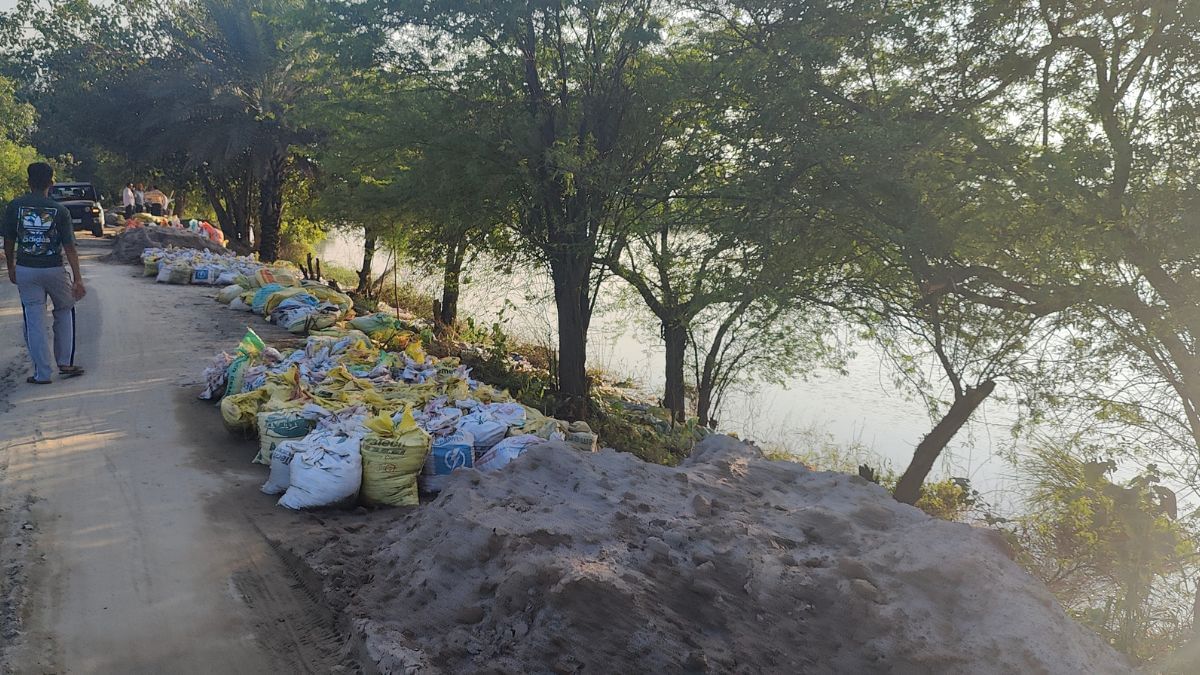
The state’s own failure to strengthen and maintain the Dhussi Bandhs (embankments) along Beas, Satluj and Ravi, and the timely desilting of local drains, also added to Punjab’s woes this year, according to Sidhu.
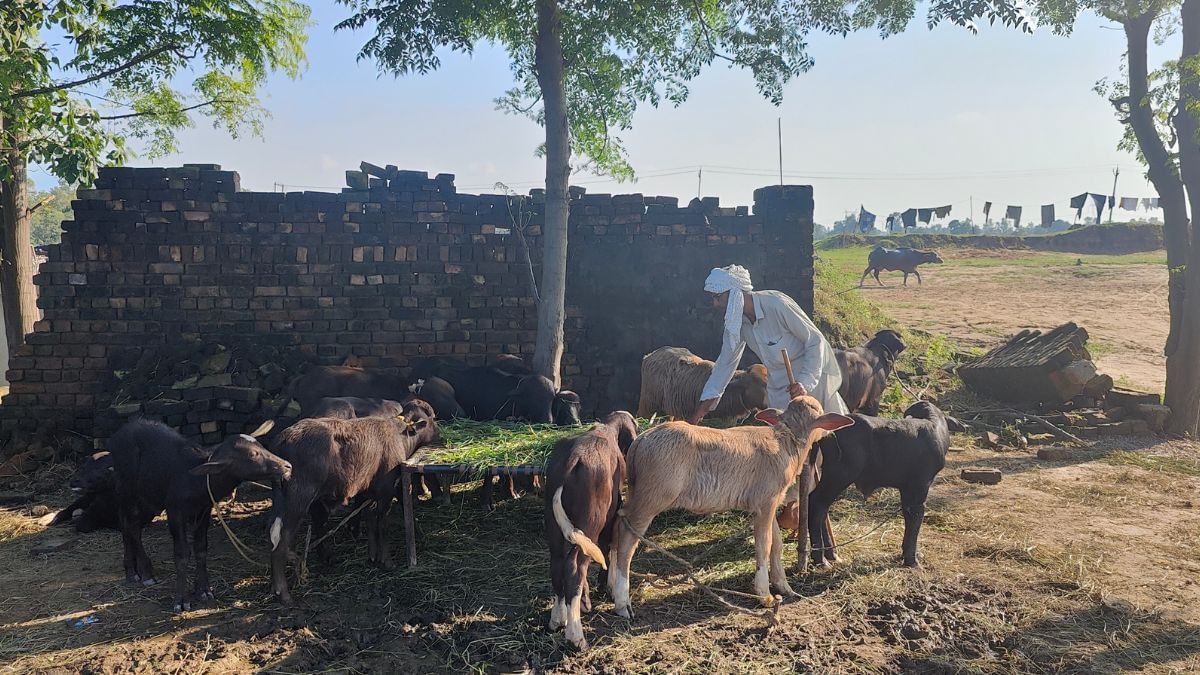
Also read: Fast breeder reactor gives India a strategic edge — and a step closer to nuclear self-reliance
Unreliable forecasts, deforestation
“The entire ecological cycle is being disrupted. The more trees we cut, the more the region’s microclimate is disrupted,” Navin Juyal, geologist.
But the root cause of Punjab’s recurring floods goes deeper.
Over the last few years, there has been an increase in mindless developmental activities in the Himalayas. Highways, hydroelectric power plants, hotels, lodges, and a thriving logging industry in Himachal Pradesh have increased the region’s vulnerability, largely due to indiscriminate tree-cutting.
Last month, as the Himalayan rivers overflowed, images and videos of large quantities of logs floating in the water were doing the rounds on social media. While the Himachal Pradesh forest department denied any illegal operations, local residents pointed to the large-scale wood industry that is operational across the state.
Navin Juyal said that between the 1950s and 1970s, over 6,000 acres of Himalayan forests were cut down for developmental activities and to fuel wood-intensive industries. It was after such a large-scale felling in the region that floods started becoming more frequent and intense.
Such deforestation often occurs without any legal provisions for replanting trees.
“The entire ecological cycle is being disrupted. The more trees we cut, the more the region’s microclimate is disrupted. When that happens, we get increased spells of intense weather systems, like the recent heavy rain,” Juyal explained.
Such misuse of the Himalayas has also caused changes to the Beas’ flow.
A study published earlier this year on the 2023 floods highlighted how the flow and composition of the Beas water have changed over the years.
Researchers have found that over the last two decades, the quantity of debris in the river has increased, and new sediments have also been discovered in the river water. This, scientists said, could be an impact of soil degradation and the loss of traditional vegetation around the river. In simpler terms, when certain native varieties of trees and foliage of an area are altered continuously, over an extended period, the profile of the soil and the ecosystems around it—rivers and climate—also start to change.
“A single reason cannot be pinpointed. There are a series of problems that have gone unaddressed for far too long,” Himanshu Thakkar said.
He said that apart from developmental activities, the authorities have also failed to keep a check on muck dumping along the Beas.
“Flood doesn’t just bring water with it. When you encroach on the river and treat it as a dumping ground, when it floods, it will obviously hit you with all this debris,” he said. “And that’s what aggravates the impact of floods.”
All these changes to the river system, experts say, have a larger impact—extreme weather and worsened disasters.
The inability of the India Meteorological Department (IMD) to provide timely forecasts is also a matter of concern. Apart from the seasonal, weekly, and daily forecasts, the IMD provides a special service to dam authorities in India, which helps them plan the opening and closing of dam gates.
In the first week of September, the Punjab water resources department wrote to the IMD, complaining about the difference between their forecasts and the actual rainfall received in the Ranjit Sagar dam catchment area. And the difference was not minute.
According to Ranjit Sagar Dam authorities, the actual rainfall recorded in their catchment area on 22 August was 39.5 mm as opposed to the 7 mm forecasted by the IMD. Similarly, on 23 August, it was 163 mm as against the forecast of only 21 mm.
“Even the 24-hour, seven-day forecast for the Ranjit Singh dam catchment, which was being updated on the IMD website regularly, provided inaccurate forecasts,” Punjab principal secretary (water resources) Krishna Kumar said in a letter to the IMD.
IMD officials acknowledged the gaps in forecasting, especially for extreme and sudden weather events, such as floods caused by localised cloudbursts. They said that the agency is working toward strengthening its systems.
The weather forecasting agency is planning to expand its radar coverage from the existing 37 sites to 73 locations by the end of 2025. By next year, the aim is to increase the numbers to about 126. The Centre’s larger plan to introduce AI to its forecasting systems might also go a long way in providing ample time to respond to disasters.
Experts say that the problem is not just the accuracy of forecasting, but also in how efficiently they are used. Once forecasts are issued, central and state agencies need to be mobilised to utilise these early warning systems to warn local people, ensure evacuation, and take advance action, such as releasing dam water, so that the impact of disasters can be minimised.
Until authorities address this multi-layered problem, Beas will continue to flow as a silent witness to Punjab’s wounds.
This is the first story in the three-part series Angry Rivers.
(Edited by Ratan Priya)



